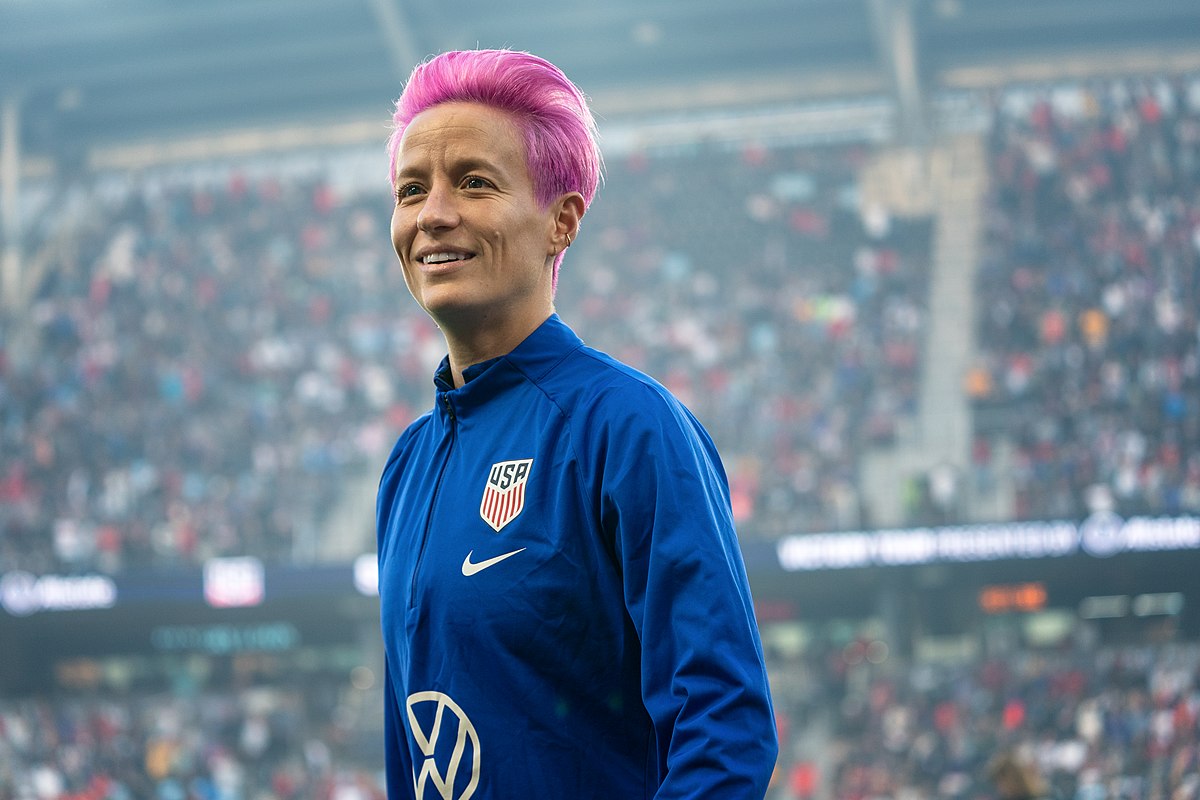Pride Month: It’s time to celebrate LGBTQ sporting success
“You can’t win a championship without gays on your team – it’s never been done before, ever. That’s science, right there!” Megan Rapinoe gleefully told reporters, after the USA had beaten France in the quarter-final of the 2019 Women’s World Cup.
Rapinoe, who captains the United States national team, is just one of the many queer women who are making their claim to fame in the world of sports. In the 2019 Women’s World Cup, there were more than 40 openly-gay players and coaches.
As with movies and television, this kind of representation is important for LGBTQ fans: not only does it mean that being a queer athlete is normalised but it also means that fans who identify as lesbian, bisexual, or transgender have something to aspire to and see themselves represented on the playing field.
Elena Delle Donne announced her marriage to girlfriend Amanda Clifton
The success of LGBTQ women isn’t limited to football, however, with plenty of openly gay players in the National Women’s Hockey League (NWHL) and the Women’s National Basketball Association (WNBA).
Elena Delle Donne, who has won two WNBA Most Valuable Player awards, announced her marriage to girlfriend Amanda Clifton in 2016. Meghan Duggan and Gillian Apps, who are Olympic medallists in hockey, are married with a son. These are just three notable examples to outline a wider trend: queer women are dominating the sporting world.
However, there is a stark contrast between the number of women, who are openly queer, and the number of men. While there were 55 ‘out’ athletes at the 2016 Rio Olympics, only 11 of them were men. So why is LGBTQ inclusivity so much better in women’s sports?
Sport is seen as being masculine; slurs are used to degrade athletes
Firstly, there is less of a stigma regarding female athletes who come out as gay.
Sport is usually seen as being hyper-masculine with homophobic slurs often being used to degrade male athletes if they do badly. Queerness is often mistakenly seen as a ‘weakness’ in male sport and stereotypes about gay or bisexual men being more ‘feminine’ means they may be viewed as worse at sport if they were to come out.
Brian McGillis was closeted during his career as a semi-professional hockey player because homophonic slurs were used to belittle and feminise players, which took a toll on both his physical and mental health. In short, to be gay is often to be labelled as ‘girly’ and therefore, poor at sport.
It doesn’t erase the homophobia they might deal with outside their careers
In women’s sport, this works in the opposite way: it’s a form of ‘positive discrimination’ against queer women. As being feminine is seen as a ‘weakness’, (either consciously or subconsciously), in the masculine culture of sport, queer women may be seen as better players because they are more ‘butch’ or ‘manly’. Therefore, they may be seen as better players due to their sexuality- the opposite of what queer men face. However, this doesn’t mean that they don’t face discrimination.
“As far as society was concerned, sport = lesbian, lesbian = different, different = something you don’t want to be,” Beth Fisher, who played international hockey, said in a piece she wrote for The Telegraph. She explained that before she knew she was a lesbian, she was aware of the stigma attached to the word and how it used negatively against women who enjoyed sport.
Even though it may be seen as more acceptable for female athletes to be ‘out and proud’, it doesn’t erase the homophobia they might deal with inside and outside their sporting careers. For example, Gilly Flaherty, (who captains West Ham), confessed that struggling with her sexuality was part of the reason she attempted suicide when she was 17.
Money is still disproportionally spent on men’s leagues
Another reason why there are more queer sportswomen is that women’s sports are rarely in the spotlight. Professional male athletes get a lot of intense attention, especially from fans and the media, but the same can’t be said for female athletes. This is especially true when it comes to media attention.
While women’s sports are becoming more popular, money is still disproportionally spent on men’s leagues: even though 40% of all participants in professional sports were women, women’s sports only received 4% of American media coverage. Similarly, in some sports programs, women got as little as 1% of airtime.
As women’s sports often receive less attention, it means that women may be more willing to be open about themselves and their identities. The fact that there is no hyper-masculine, homophobic “lad culture” in female sporting spaces also likely plays a role in female sports stars being upfront about their sexuality.
It is likely that is largely due to a fear of transphobic backlash
The impact that LGBTQ athletes have made in women’s sports should definitely be celebrated. But that doesn’t mean it’s the end of homophobia and transphobia in sports. From the toxic homophobic masculinity present in male sport to the stereotype that sporting women must be queer, there is still much progress to be made. Not to mention the rampant transphobia that still exists within the sports industry with a number of prominent athletes criticising transgender women, who is competing in women’s sports.
According to a survey by Equality Network, 73% of LGBT respondents think homophobia and transphobia are barriers to people taking part in sport. For example, while transgender people have been able to participate in the Olympics since 2004, none have done so. It is likely that is largely due to a fear of transphobic backlash.

Comments